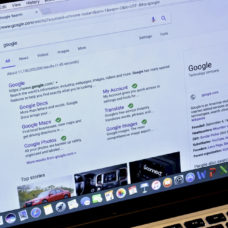A series of questions about intrusive interstitial penalties came up during the July 24th Google Webmaster Central hangout. Before we explore John Mueller‘s response, let’s do a quick recap.
What is an Intrusive Interstitial?
An intrusive interstitial is any pop-up ad that blocks most or all of a webpage, leading to poor user experience on both the desktop and mobile versions of a site.
We’ve all experienced it while surfing the web. It’s that massive pop-up that covers most of a page’s content without prompting. Websites use it as a useful tool for driving conversion.
Unfortunately, removing the pop-up ad is not always easy. The interstitial could become unresponsive and refuse to go away, leaving users annoyed and frustrated.
An intrusive interstitial can ruin user experience on the web, and that’s why Google hates it. So, the search giant devalues pages that use these intrusive pop-up ads in search results.
In the Webmaster Central hangout, a site owner asked John Mueller if there’s a way to use intrusive interstitials without getting penalized.
Here’s what Mueller said.
Two Ways to Use an Intrusive Interstitial Without Getting Devalued
1. Hide it from Google Bot
The site owner asked if they could get away with hiding intrusive interstitials from Google bot. It involves serving the massive pop-up ads to direct traffic, but smaller interstitials to organic traffic and Google bot.
The method is called cloaking, and it’s an acceptable way to deal with interstitials.
“That’s generally okay. The thing to watch out for there is that Googlebot, when we crawl and index your page, we don’t send a referrer,” says Mueller. “So that’s something where if users coming in from search see kind of an improved view – that’s fantastic.”
2. Legal Interstitials
Legal interstitials are necessary to inform users about privacy policies, including data collection. It’s a legal requirement. So, Google doesn’t penalize websites that use these interstitials, no matter how intrusive they are.
Mueller explained that Google tries to recognize legal Interstitials and skip over them.
“The important part is that you’re showing this on top of the HTML page; not that you’re showing it instead of the HTML page.”
To Wrap Up
If you’re wondering whether Gooogle penalized your page for using large ad pop-ups, you may never know. According to Mueller, it’s impossible to tell when the search giant devalues a page for using intrusive interstitials.
Besides, the penalty is a “softer” negative ranking that only affects individual pages.
“My understanding is that especially something like the intrusive interstitial change, that’s something that is more probably a softer factor. And it’s something that wouldn’t be applied across the whole website.”



















Comments (0)
Most Recent